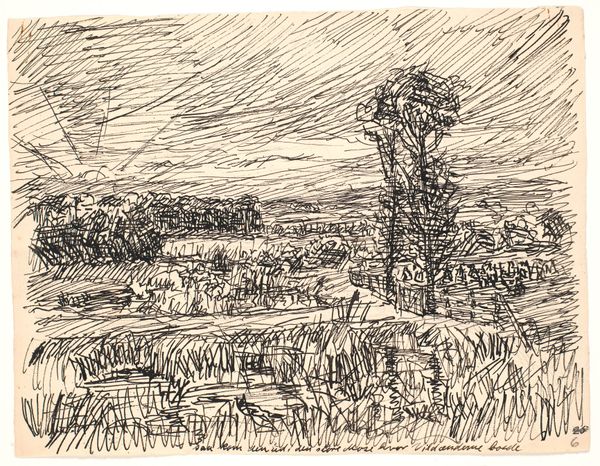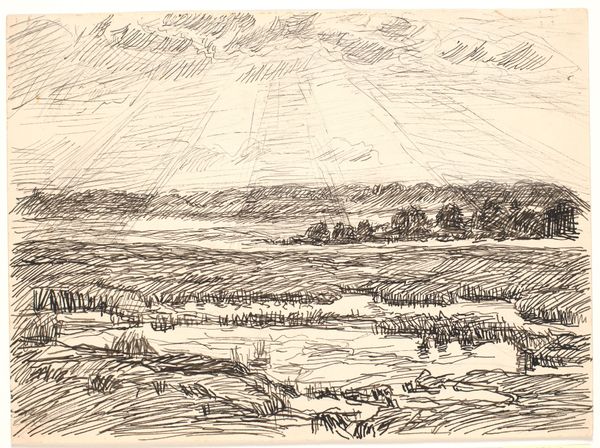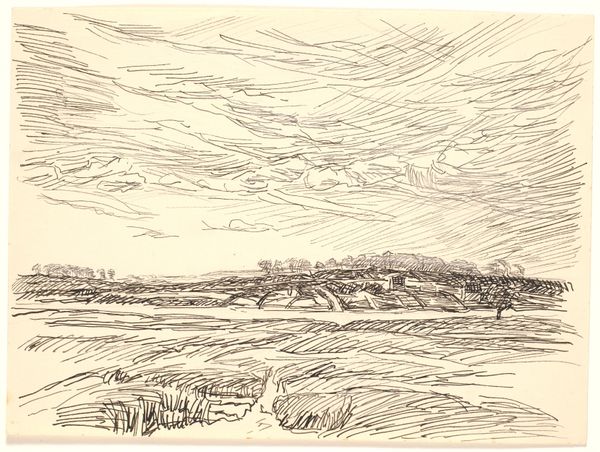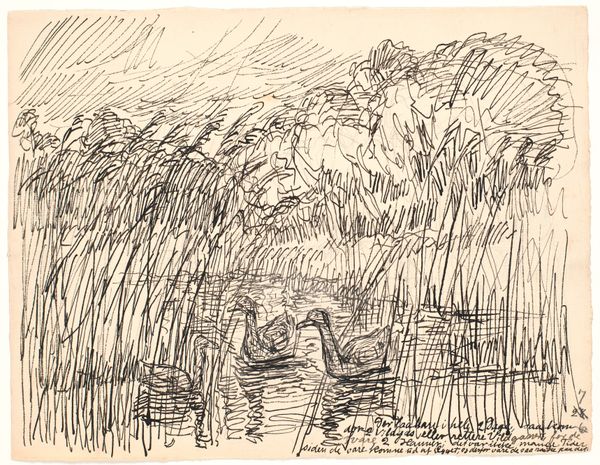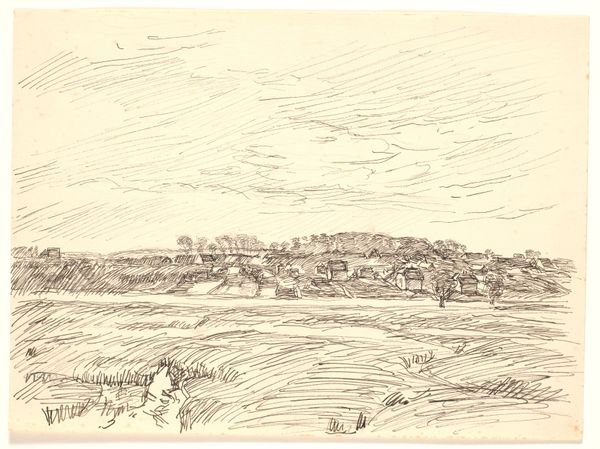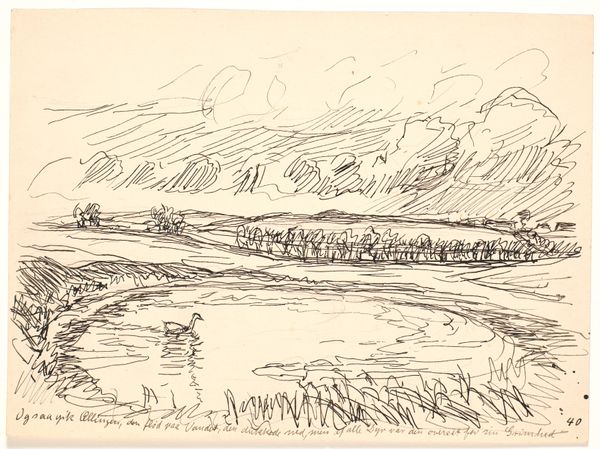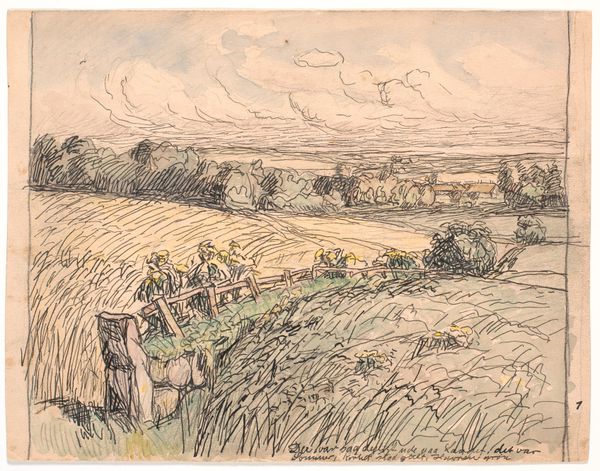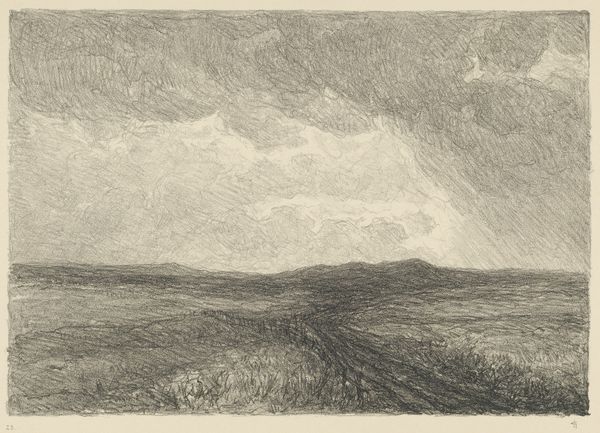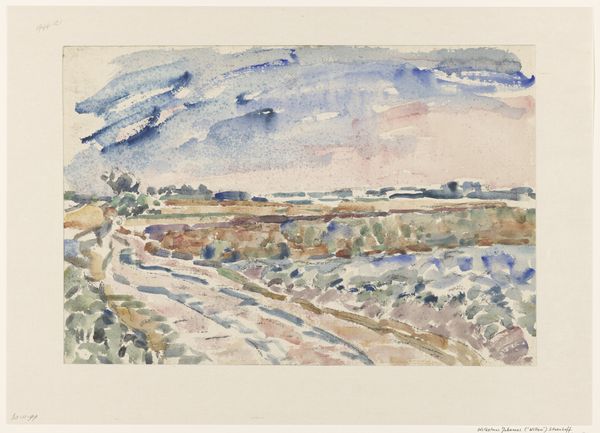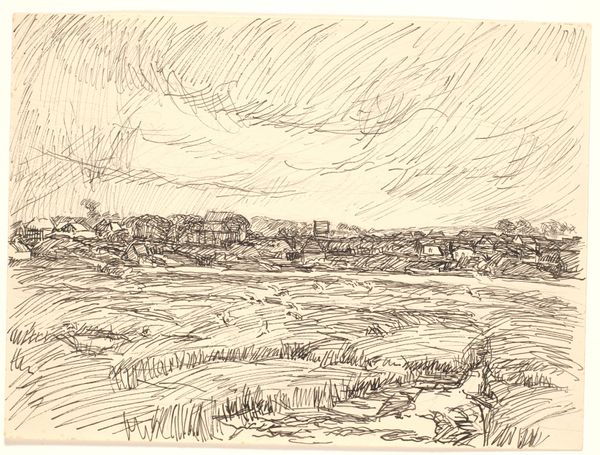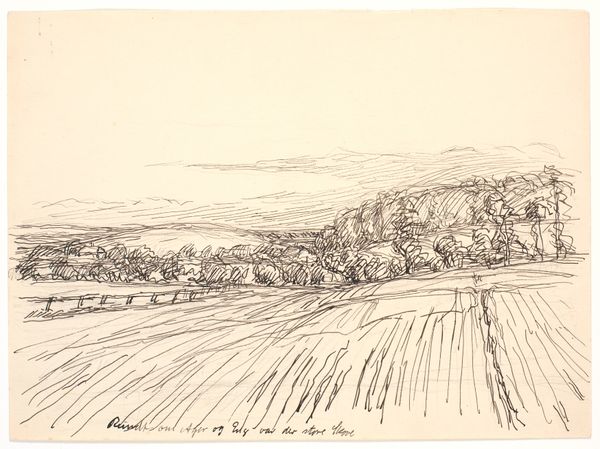
Dimensions: 248 mm (height) x 339 mm (width) (bladmaal)
Editor: This is "En Aften Solen gik saa velsignet ned...", created by Fritz Syberg in 1928. It’s an ink and watercolor drawing. It gives a somewhat melancholic feeling, especially with the rather washed-out colors, despite depicting what seems to be a sunset scene over a marsh with ducks. What stands out to you in this work? Curator: Well, immediately I'm drawn to the apparent, unblended application of ink and watercolor. It’s almost a sketch but considered in its deployment of line and wash. Think about the labor involved. Syberg meticulously layers these strokes, creating texture and depth with what would likely have been accessible, mass-produced materials. This method challenges notions of artistic genius and emphasizes instead the hand, the process of repetitive mark-making to capture a fleeting moment in nature. Does this repetition, this accessible technique, change how you understand the 'sunset' as a subject? Editor: Definitely. I initially saw it as a beautiful but somewhat conventional landscape. Now I'm seeing it more as an investigation into how artistic labor and readily available media can transform something commonplace into art. Are you thinking about plein-air painting here? Curator: Precisely. The act of creating outdoors itself removes it from academic studio practice, and brings the materiality of labor in art into focus: transportation, weather, the ephemerality of the sun, all influencing the drawing's construction. Can we even see this as challenging the art world's privileging of oil on canvas and formal artistic training, in favor of accessible methods available to more hands? Editor: I think that’s really insightful. I never considered it in those terms. Considering the artistic materials alongside the style brings the piece alive. Thanks! Curator: Of course! Now I am thinking about the ways "naturalism" and "impressionism" intersect when we center materiality in our analysis...
Comments
No comments
Be the first to comment and join the conversation on the ultimate creative platform.
